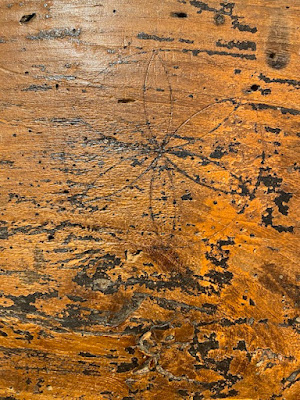Magic flutes
A few weeks ago I found myself talking to another author about the demise of second hand bookshops (victims of internet sales and the now-common shops that sell used books for charity) and the similar disappearance of music shops. Since we were near Oxford at the time, we spoke of a couple of music shops in the city that had disappeared. As I’d forgotten their names, my interlocutor put me right. ‘There was Taphouse’s in Magdalen street, and Russell Acott in the High Street,’ he reminded me. ‘And even a stall selling second hand records in the covered market,’ I added.
Later, I remembered that I’d actually taken some photographs of the shop front of Russell Acott’s in the High Street, because of its charming carved decoration.* How could one not taken a second, or third, look at carved musical putti blowing flutes† and playing other instruments such as the horn or the lyre? Especially when some of them are accompanied by tiny scrolls inscribed with the date of the frontage: 1912. And when they are surrounded by crisply carved foliage. And when the carver has made the putti more animated and distinctive by giving them a strong three-dimensional quality – look how the knees are set forward, the hands stick out from the surface of the carving, and the feet break out of the space between the arches.
If you’ve read this far, you’ll get the impression that I really like this kind of thing. I particularly admire the quality of the craftsmanship, the way in which the carvings fit the kind of business, the fact that this sort of thing is strictly unnecessary but the shop owner wanted their facade to be especially elegant, and the way in which the carving combines advertising with a kind of generosity – the public street was enhanced by this bit of whimsy. In my opinion, it still is.
- - - - -
* This shopfront was created by Acott’s, who merged with another music business, Russell’s, in 1950. The company traded from this shop until 1998, when they moved to an out-of-town location. Russell Acott finally ceased trading in 2011, competition from online sellers meaning that when the owners retired, the business closed for good.
† Or are they piccolos?








